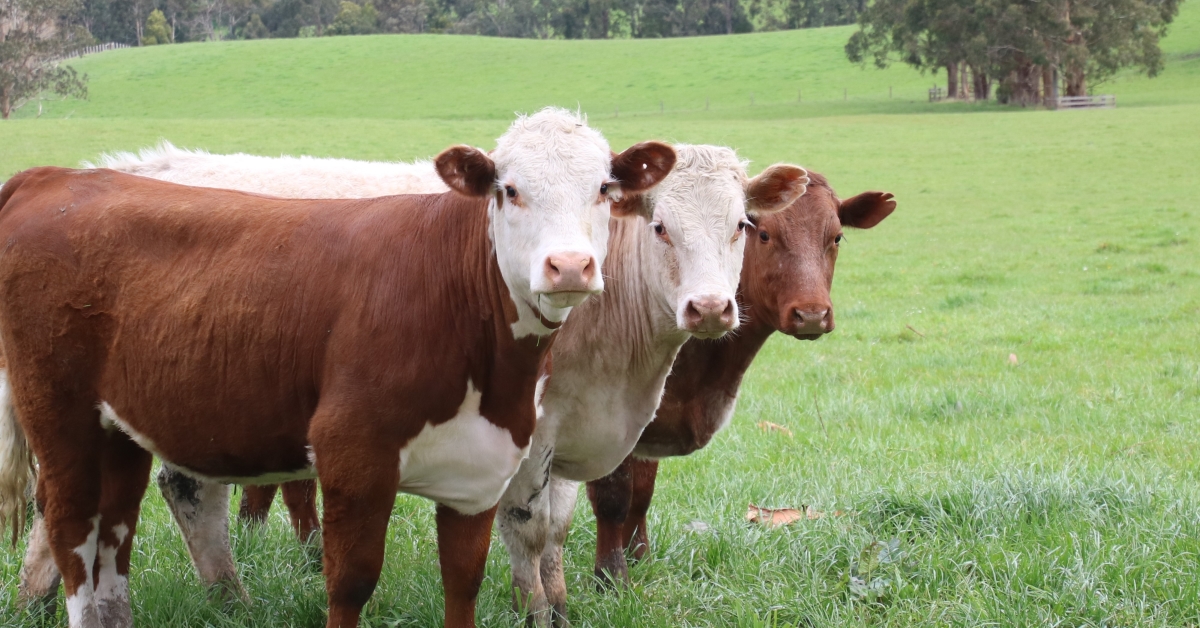
Pinkeye is a significant health challenge that can affect cattle throughout the year but is of particular concern during the summer grazing season. Pinkeye is the common name for infectious bovine keratoconjunctivitis (IBK), a contagious disease that causes inflammation of the cornea (the eye’s protective outer barrier) and the conjunctiva (the whites of the eyes). If left untreated, severe damage to the eye may occur. Economic losses associated with this condition are estimated at $150 million annually due to reductions in weight gain, decreases in milk production, treatment costs, and potential price discounts for affected animals.
Causes
Pinkeye is primarily caused by the bacterium Moraxella bovis (M. bovis). Other infectious organisms, such as mycoplasma, chlamydia, and infectious bovine rhinotracheitis (IBR), may also contribute to the disease. Infection can spread through animal-to-animal contact, flies, and contact with objects such as feed bunks or water tanks. Excessive sunlight, dust and tall grass can increase the risk of infection.
Younger animals are more susceptible to pinkeye, most likely due to natural immunity present in older animals from previous exposure. Stress events such as moving livestock or weaning can also suppress the immune system and increase the potential for contracting the disease.
Clinical signs
Within the first three to five days following infection, cattle will blink frequently and have excessive tear production. There will be redness in the conjunctiva of the eye. Cattle in this beginning stage will often seek shade, which reduces the amount of time they spend grazing. After a day or two, a small white spot (an ulcer) will form in the center of the cornea. The cornea will then develop a cloudy blue-grey appearance due to inflammation. One or both eyes may be affected, and the eye/eyes are often held shut due to pain.
If left untreated in the early stage of the disease, the ulcer will continue to spread across the cornea and the eye will become increasingly cloudy. Blood vessels from the outside of the cornea will begin to grow in order to help with healing, giving the cornea the classic pink appearance. The ulcer will eventually cover most of the cornea, and in extreme cases of infection the eyeball may rupture.
Prevention
Vaccination can be one part of a strategy to prevent pinkeye. When vaccinating, follow label directions in regard to boosters, dosage, and treatment indications. It can take 4–6 weeks to reach optimal immune response, so producers should plan accordingly.
Because pinkeye can result from multiple sources of infection, vaccination with commercial vaccines may provide limited success. In this case, producers may find it worthwhile to work with a veterinarian to develop an autogenous vaccine. This involves collecting samples from the eyes of affected cattle and then submitting the samples to a lab to be cultured. This allows for identification of the specific type of pathogen responsible for an outbreak.
Strategies that can reduce the risk of pinkeye include managing dusty conditions, controlling weeds and providing shade for animals on pasture. Fly control is also important to help minimize the potential for transmission of pinkeye while increasing grazing time and overall animal performance. Hubbard Feeds offers several loose mineral or low moisture block product options containing feed-through fly control additives to prevent fly larvae from developing in manure. Altosid® IGR is labeled only for horn flies, while ClariFly® will control horn, face, stable and house flies. These products should be fed at least 30 days prior to the start of fly season. Hubbard also offers mineral products containing garlic extract that can act as a repellent, reducing fly cover and behavioral responses to flies. Producers should consider a multi-faceted approach and use these products in conjunction with measures such as ear tags, back rubbers, and insecticide sprays.
In addition to providing fly control, a good vitamin and mineral program can promote healthy eye tissue and provide an immune response against pinkeye. Trace minerals such as selenium, copper, zinc and manganese have been shown to play a role in this response. Vitamins A and E are also important for their anti-inflammatory and antioxidant properties. Feeding Blueprint® minerals maximizes bioavailability and optimizes health and performance.
Treatment options
The key to treating pinkeye effectively is acting immediately upon observing initial symptoms. When pinkeye is caught early, treatment with long-acting antibiotics, including tetracycline and tulathromycin, is typically effective in killing the causative agent. If treatment is ineffective, consider working with a lab that can conduct antibiotic sensitivity testing.
Antibacterial topical treatments may also help alleviate discomfort and speed the healing process. Protecting the eye from sunlight by applying an eye patch can be beneficial, since ultraviolet rays can activate enzymes that may increase eye damage. An eye patch also reduces shedding of bacteria and exposure to infection by other animals.
The eyes of most infected cattle heal within a month or two, but a white scar may remain for the lifetime of the animal. Blindness or reduced eyesight in the affected eye may occur, which can create challenges for the animal as well as potentially reducing the value of feeder calves and replacement heifers.
Summary
Pinkeye is a costly disease that affects cattle in a variety of production environments. Recognizing the signs early and treating quickly and appropriately is critical to reducing impacts on animal health and performance. Implementing fly control measures, ensuring that vitamin and mineral requirements are met, and managing the environment to reduce eye irritants can also help prevent outbreaks.
- Log in to post comments
